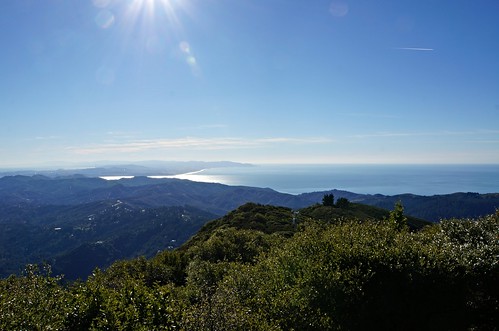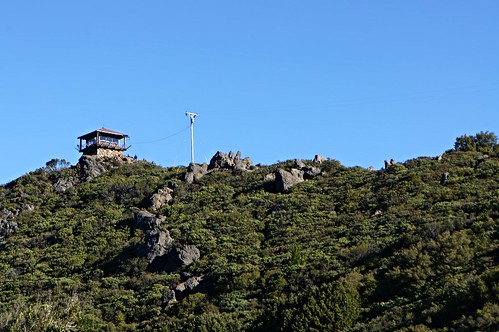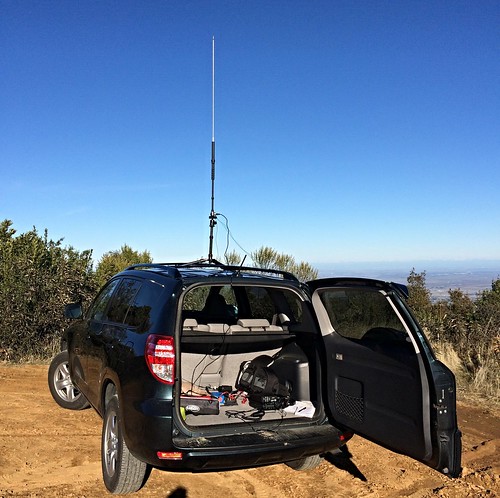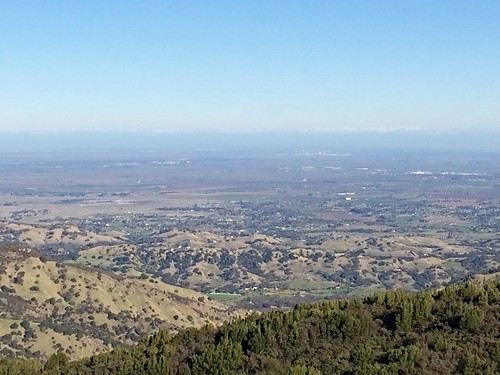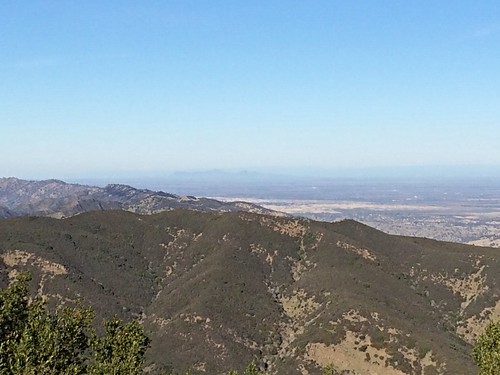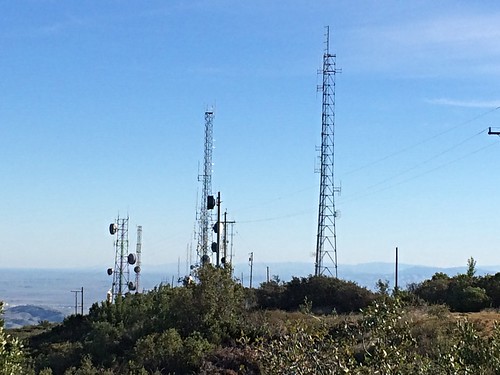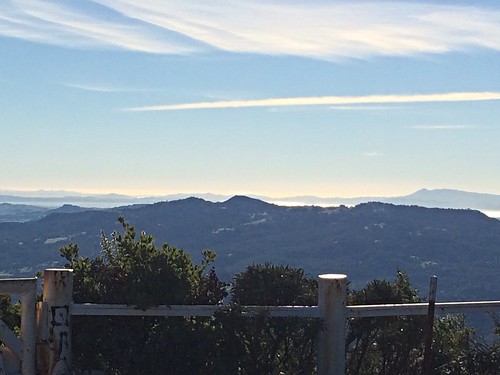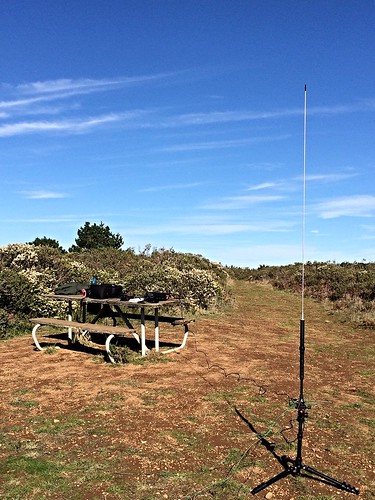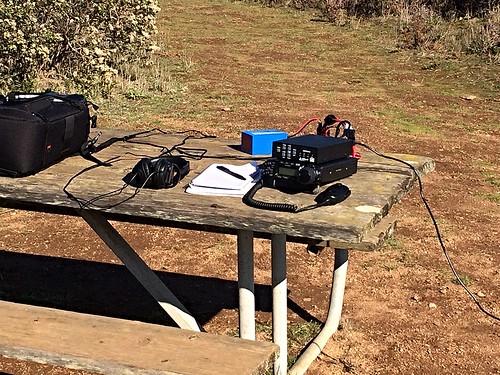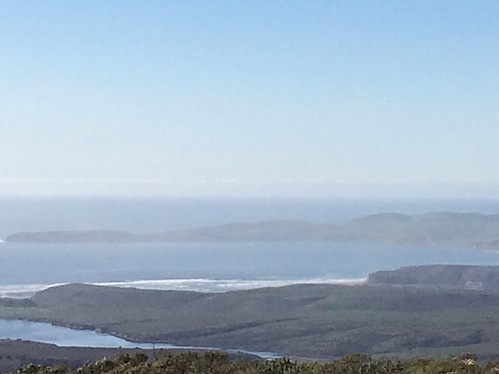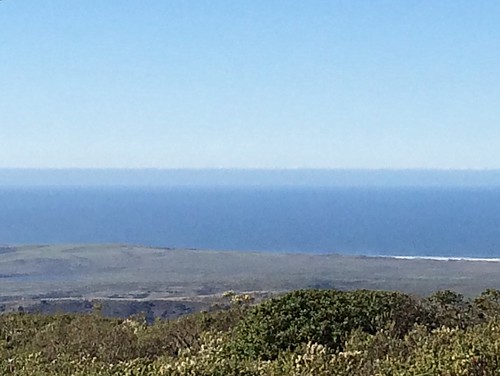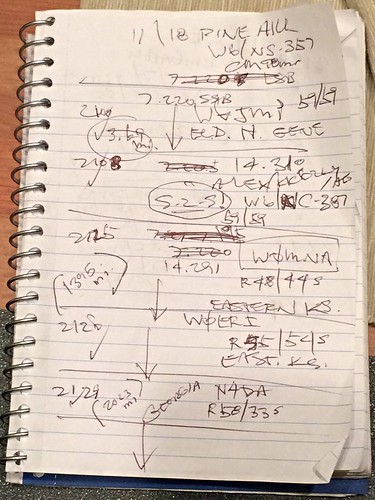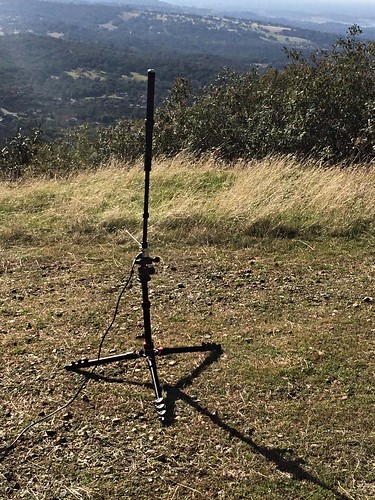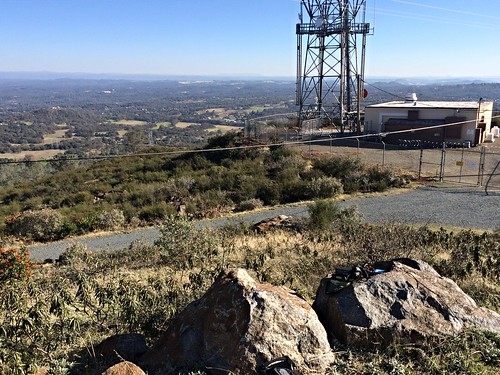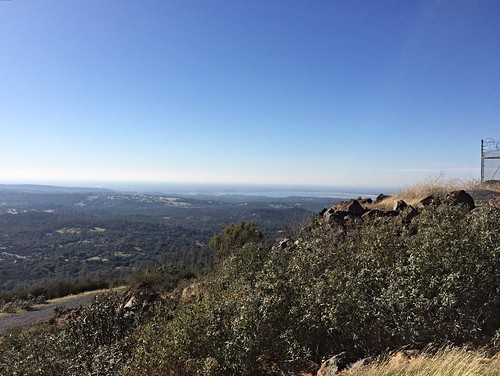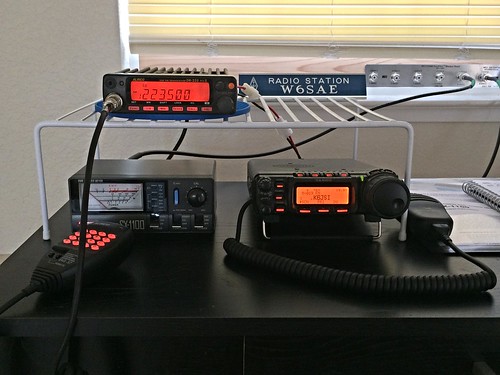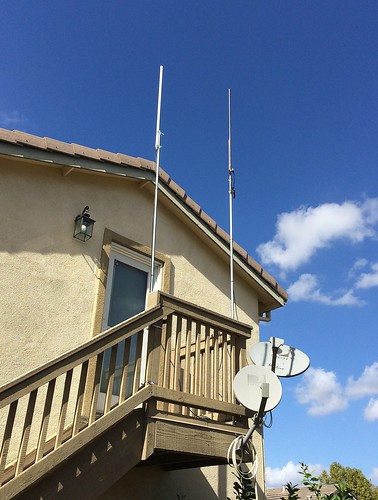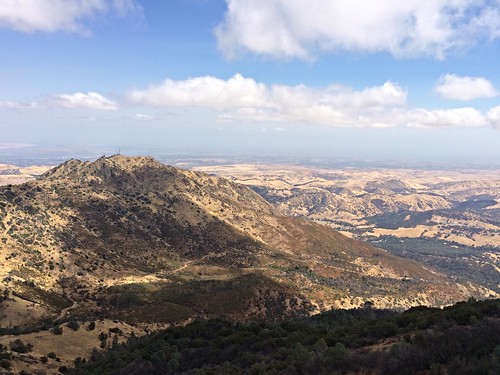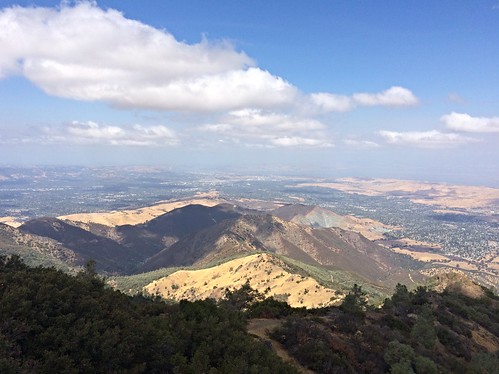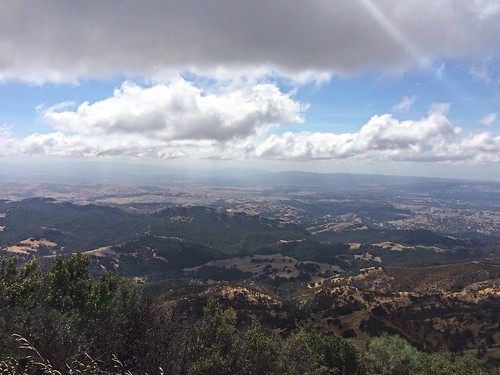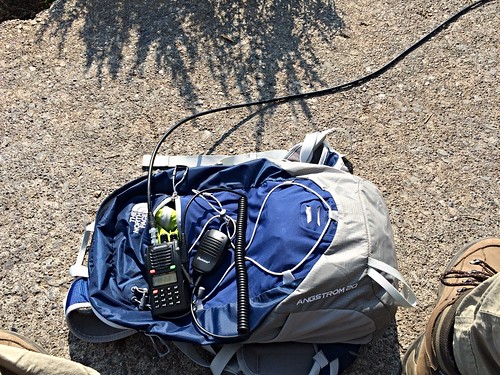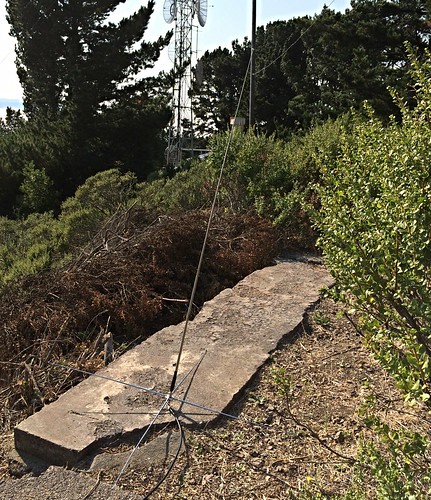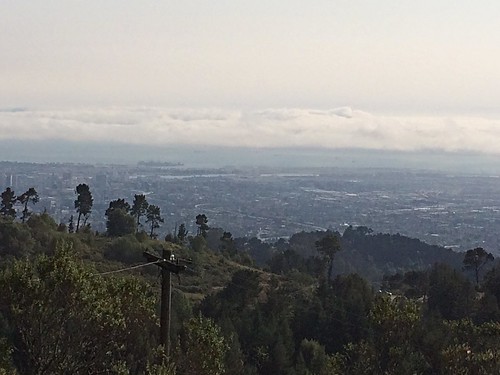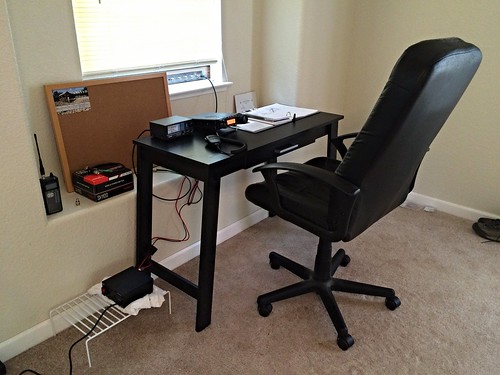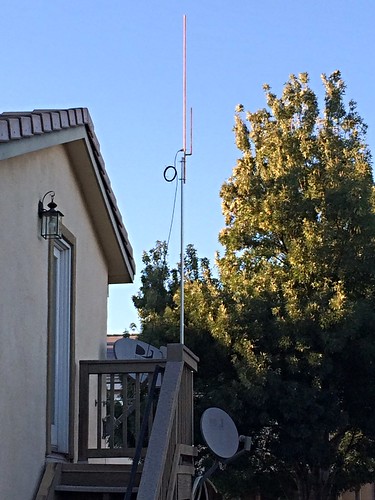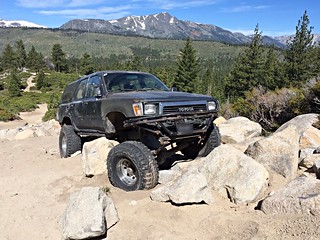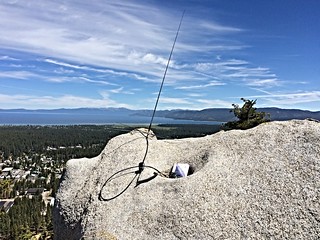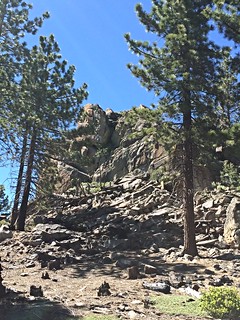Yesterday (November 18), I activated Pine Hill, near the community of Rescue in the Sierra Nevada foothills, 25 miles or so east of Sacramento in El Dorado County. It has an elevation of 2,059 feet (628 meters). It's located in the Pine Hill Preserve, home to a number of unique species of plants and animals. The summit is open for public access, as long as visitors keep to the trails.
This was to be my first expedition in which I operated HF in single-sideband (SSB) mode, as opposed to my usual VHF/UHF FM. I tried not to set my expectations too high, as it was planned at the last minute and I felt somewhat disorganized. In addition, I was not fully confident that I really knew what I was doing when it came to SSB. (High Frequency or "HF" are the bands with which one tries for the long-distance "DX" contacts.)
I was able to drive in to within about 6/10 of a mile from the summit, where there is a gate for pedestrian access. The walk up the paved private road was relatively easy. Once at the top, the view was impressive, as can be seen through my photos.
After I caught my breath and collected myself, I set up the radio and antenna, plugged in the headphones, and double-checked to make sure that I was operating within my frequency privileges. Then I spotted myself on the SOTA Goat app to advise the chasers that I was on the air.
I tried the 40-meter band (7.220 MHz) first. I called "CQ SOTA" and immediately received a response from Gene, W6JMP. Gene's QTH (station location) was 3.69 miles away in El Dorado Hills--I literally drove right by his house on my way to the hill...well, at least my signal was getting out.
After several fruitless minutes on 40 meters, I decided to switch to 20 meters. As I was spotting myself on SOTA Goat I saw that an acquaintance, Alex, KK6ZLY/AG, had just spotted himself on Hill 1272 (W6/NC-387), approximately 73 miles (118 km) to the southwest. I rolled over to 14.310 MHz just in time to hear him calling CQ. I logged my first "Summit-to-Summit" contact, and 73 miles was better than 3.89--but I was still not setting any records for distance.
Encouraged by this QSO, I switched to 14.291 MHz and, after confirming the frequency was clear, started calling CQ myself. At 2125 hours UTC (1:25 p.m. local), W0MNA responded, followed by W0ERI a minute later. Their QTH? "Eastern Kansas." Roughly 1,395 miles (2244 km) away. Now, this is what I got into the hobby for! Their signals were quite strong and clear; mine was slightly less so on their end.
Three minutes later, N4DA. His signal was quite strong on my end, although mine was apparently not so good on his end. We were able to successfully complete the QSO, though. Because of the difficulty hearing me on his end, I never caught his QTH. I made a mental note to look up his callsign when I got home.
N4DA was my last contact on HF, and after another 10 minutes or so I switched over to 146.520 MHz (FM) to drum up a few local contacts. I logged four in quick succession, the furthest over 90 miles away in Lake County, California. My grand total for the day was nine QSO's.
I packed up my rig: a Yaesu FT-857D, running through an LDG Z-11 Pro II antenna tuner to a Yaesu ATAS-25 portable vertical antenna--I operated with 50 watts on 40 and 20 meters, 5 watts on 146.520.
As I drove home, I wondered about N4DA. I knew that Region 4 was in the southeastern U.S., but operators here are not required to change their prefixes when they move so I wasn't sure. As soon as I got home I went to the computer and looked him up: Cartersville, Georgia, 2,023 miles (3255 km) away! And with 50 watts and a small vertical antenna on my end.
All in all, not bad for my very first attempt at HF. Especially considering my lack of confidence when I started. Needless to say, my confidence--and enthusiasm--shot way up.
Clicking on any image below will enlarge it.
Portable station W6SAE; those rocks made a convenient work station.
Yaesu ATAS-25 ("Active Tuning Antenna System"), configured for HF--it gave me contacts 2,023 and 1,395 miles to the east, far beyond those mountains in the distance.
The ATAS-25 configured for VHF/UHF, local and regional distances.
The views were impressive:


